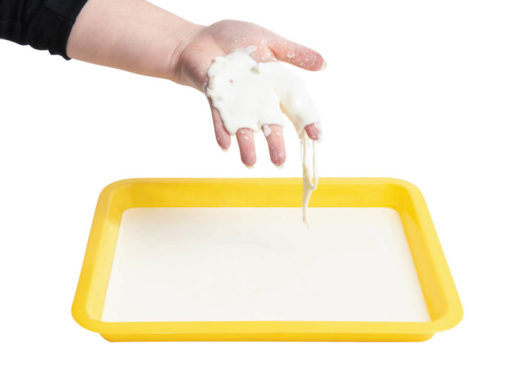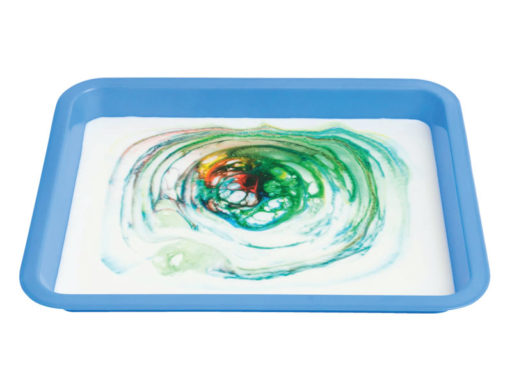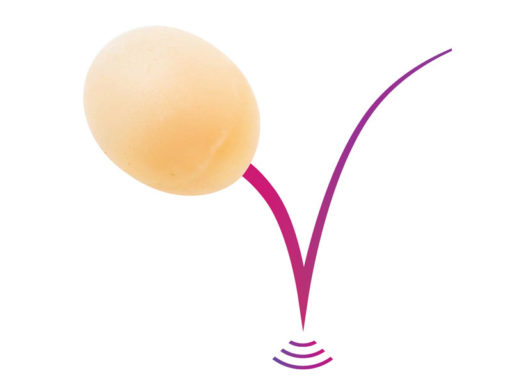If a chemical reaction produces a gas, you might not notice it, unless the gas has a colour or a smell. This activity will show how you can capture the gas produced in a chemical reaction in a visually exciting way.
Printable downloads
Follow these steps…
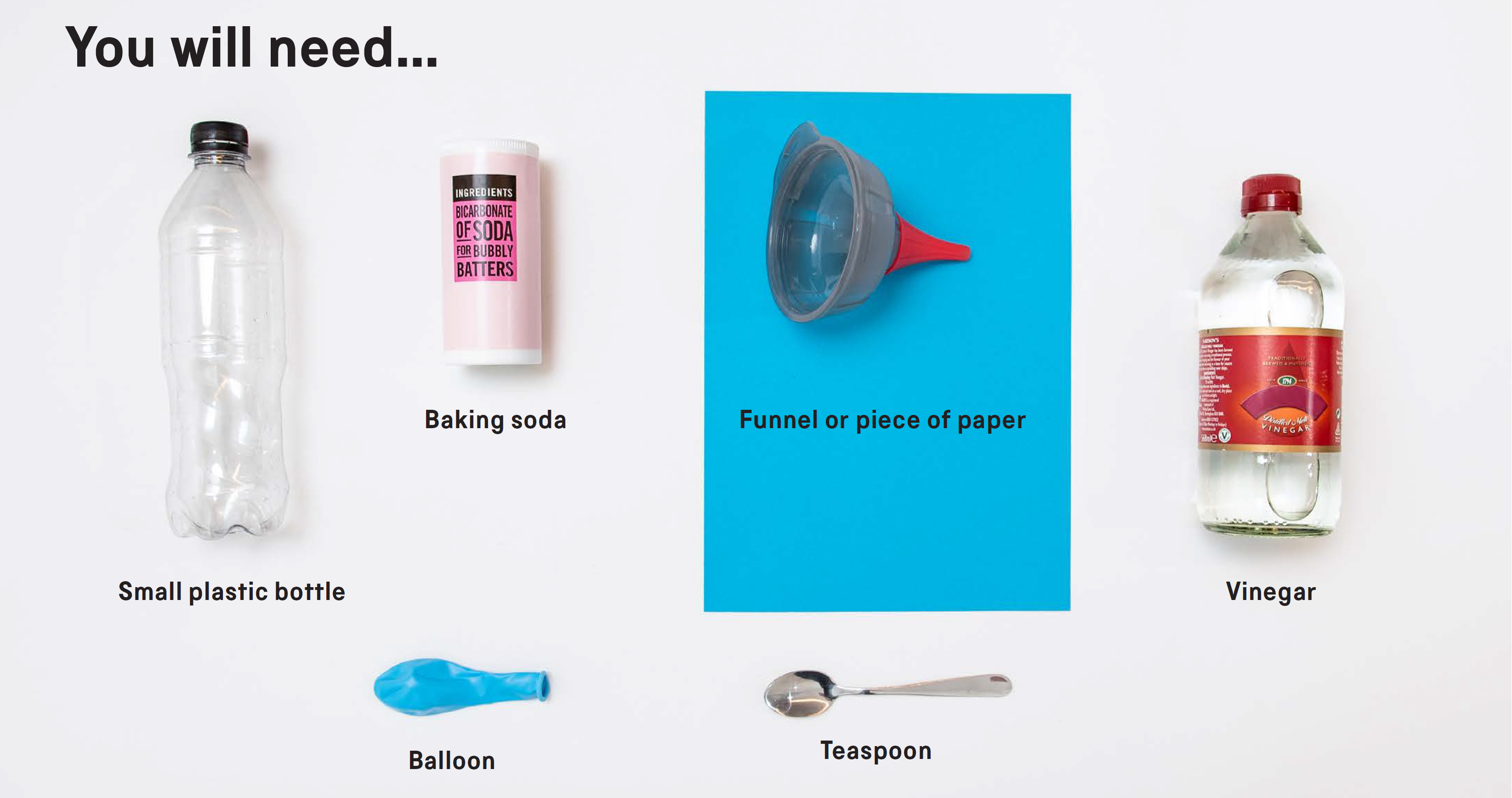
-
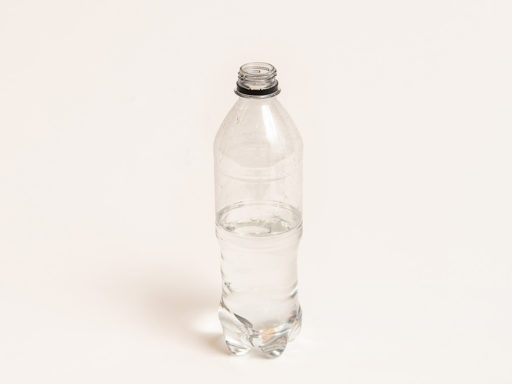 Half fill the bottle with vinegar.
Half fill the bottle with vinegar. -
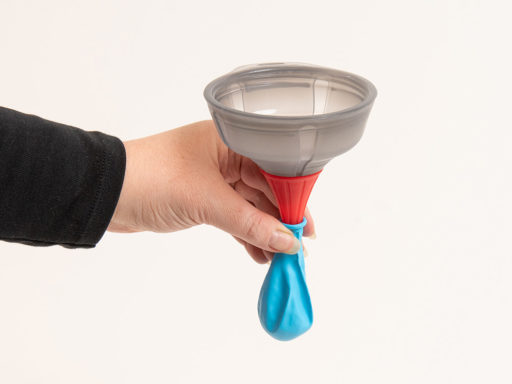 Using a funnel, half fill the balloon with baking soda. It helps if you’ve pre-stretched the balloon by blowing it up. You can make a funnel by rolling up a piece of paper.
Using a funnel, half fill the balloon with baking soda. It helps if you’ve pre-stretched the balloon by blowing it up. You can make a funnel by rolling up a piece of paper. -
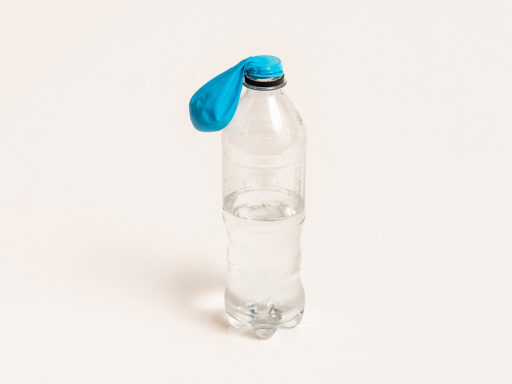 Carefully place the balloon over the neck of the bottle and allow it to droop over to the side, making sure none of the baking soda falls into the bottle.
Carefully place the balloon over the neck of the bottle and allow it to droop over to the side, making sure none of the baking soda falls into the bottle. -
 Lift the end of the balloon and pour the baking soda into the bottle. Shake well and place the bottle on a table. Watch the balloon inflate all by itself!
Lift the end of the balloon and pour the baking soda into the bottle. Shake well and place the bottle on a table. Watch the balloon inflate all by itself!
Think and talk about…
- What can you see happening in the bottle?
- What is making the balloon inflate?
- Is it blowing up faster or slower than when you use your mouth??
Investigate…
- What happens if you use more baking soda? Or more vinegar?
- Time how long it takes to inflate and then repeat the experiment. Were the times similar?
- Try using a different size balloon and see what effect it has.
- What happens if you use a bigger or smaller bottle?
Did you know?
Carbon dioxide is a greenhouse gas that contributes to global warming. Natural sources include volcanoes, decomposing vegetation and respiration from living organisms. Human sources include the burning of fossil fuels and deforestation.
What’s the science?
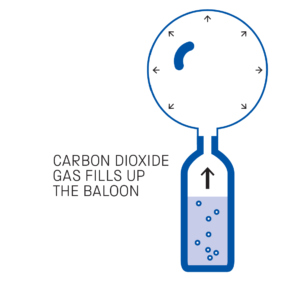 When you add the baking soda to the vinegar it causes a reaction. That reaction releases a gas called carbon dioxide (CO2).
When you add the baking soda to the vinegar it causes a reaction. That reaction releases a gas called carbon dioxide (CO2).
Because the balloon forms a seal around the bottle, the gas produced cannot escape, so it fills up the balloon.
Science in your world
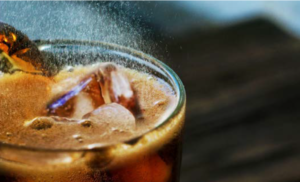 Carbon dioxide is used to produce carbonated soft drinks and soda water. Traditionally, the carbonation in beer and sparkling wine came about through natural fermentation, but many manufacturers now carbonate these drinks artificially.
Carbon dioxide is used to produce carbonated soft drinks and soda water. Traditionally, the carbonation in beer and sparkling wine came about through natural fermentation, but many manufacturers now carbonate these drinks artificially.
